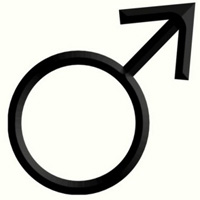Epidemiological, clinical and laboratory differences between male urethral infections due to Haemophilus spp. and those due to Neisseria gonorrhoeae, Chlamydia trachomatis, Mycoplasma genitalium and Ureaplasma urealyticum: A descriptive study

Accepted: October 7, 2021
All claims expressed in this article are solely those of the authors and do not necessarily represent those of their affiliated organizations, or those of the publisher, the editors and the reviewers. Any product that may be evaluated in this article or claim that may be made by its manufacturer is not guaranteed or endorsed by the publisher.
Authors
Objective: To describe the epidemiological, clinical and laboratory characteristics of male patients diagnosed with Haemophilus spp. urethral infection and to compare them with the characteristics of male patients diagnosed with N. gonorrhoeae, C. trachomatis, M. genitalium and U. urealyticum urethral infection. Over the past 2 years, an increase in urethral infections due to Haemophilus spp. was observed.
Materials and methods: All male patients who attended our Department of Sexually Transmitted Infections between January 2018 and February 2019 were retrospectively studied; they underwent conventional bacteriological and multiplex PCR studies in the urethra at the same time.
Results: Of the 86 patients studied, a unique microorganism was detected in 76 cases, N. gonorrhoeae in 24, Haemophilus spp. in 21 (16 H. parainfluenzae and 5 H. influenzae), C. trachomatis in 19, M. genitalium in 8 and U. urealyticum in 4; 10 cases presented more than one microorganism. In case of multiple aetiological agents, sexual partnership was multiple. In the Haemophilus group, 81% reported only unprotected oral insertive sex; symptoms lasted for more than one week in 62% of the patients.
Conclusions: Haemophilus is an aetiological agent of non-gonococcal urethritis whose incidence is clearly increasing; the main route of transmission is oral sex. The most common reason for consultation is dysuria and testicular pain, while urethral discharge was predominant for the other causes of urethral infection. Due to the high frequency of antibiotic resistance in the Haemophilus group, it is necessary to confirm eradication by performing a test of cure.
How to Cite
PAGEPress has chosen to apply the Creative Commons Attribution NonCommercial 4.0 International License (CC BY-NC 4.0) to all manuscripts to be published.

 https://doi.org/10.4081/aiua.2021.4.468
https://doi.org/10.4081/aiua.2021.4.468



